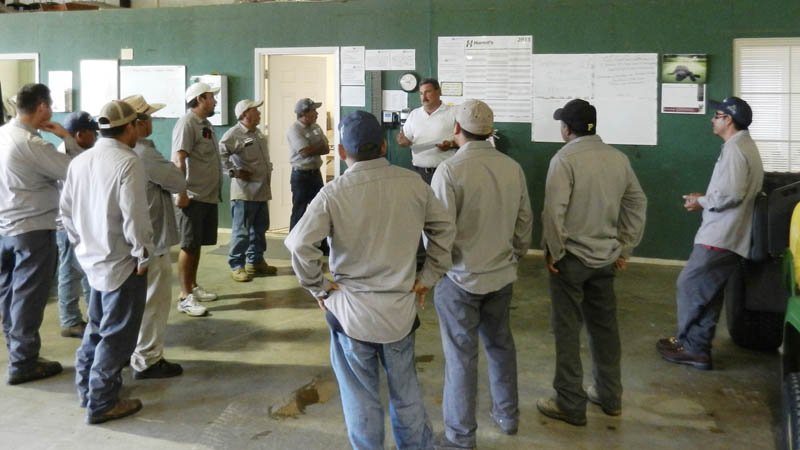
For the past century-plus, golf has had a pretty good run in this country as a game supported mostly by white males.Those demographics will have to take on a different look if it is going to be viable for the next 100 years.
"One of our stated objectives is we want golf to look like America looks," said World Golf Foundation CEO Steve Mona. "That means gender perspective, age, ethnicity, physical disability, sexual orientation, you name it. And we're not there, obviously. The biggest delta is women are 50 percent of the population and just 24 percent of the golfer population. Minorities are 37 percent of the population and just 18 percent of the golfer population."
There are plenty initiatives afoot to help golf usher in a new era. Some are taking place at the association level, like the First Tee, which started in 1997 and today claims to reach 5 million kids annually, and the recently launched PGA Reach program that also promises to introduce the game to children and veterans and to others through the workplace.
Other attempts at growing the game are occurring at a more grassroots level.
Jorge Croda is more than a skilled superintendent who transformed Southern Oaks Golf Club from a rundown daily fee in northern Texas into one of the best-conditioned courses in the Dallas-Fort Worth metro area on his way to being named the co-winner of the 2017 TurfNet Superintendent of the Year award, presented by Syngenta. He also is one of the game's true ambassadors.
One of my goals is growing the game, not just for kids, but women, minorities, all people. Teaching them the game has impacted their lives through focusing on the importance of values in their personal and professional lives, and also the importance of societal responsibility.
An 8 handicapper, Croda is a skilled player who shares his passion for the game with anyone who has an interest in learning the game. A certified First Tee instructor, he has helped introduce thousands of Fort Worth-area kids to the game. He also teaches adults, and has helped dozens of employees and hundreds of others
Like the First Tee, which teaches children soft skills through its core values of honesty, integrity, sportsmanship, respect, confidence, responsibility, perseverance and courtesy, Croda believes adults too can learn from the lessons the game teaches. In fact, he said, it's a critical component of helping the game stick with newcomers.
"One of my goals is growing the game, not just for kids, but women, minorities, all people," said Croda who recently started his own consulting business after a change in ownership at Southern Oaks Golf Club in Burleson south of Fort Worth.
"Teaching them the game has impacted their lives through focusing on the importance of values in their personal and professional lives, and also the importance of societal responsibility."
According to the WGF, about 24 million people in the U.S. play golf. The National Golf Foundation puts that number at a little lower at about 20 million. Of the WGF's total, approximately one-fourth are women and about 4.3 million are minorities, which the association defines as African American, Latino or Asian.
TurfNet reported recently that interest in golf is at an all-time high. Getting people to the golf course and convincing them to come back has been the challenge. Or, as Nikki Gatch, chief membership officer of the Southern California PGA, put it, there is a difference between introducing people to the game and making the experience a positive one. Gatch was on hand in San Diego as the keynote speaker at the second annual Ladies Leading Turf, a professional networking event for women in the golf industry. Held in conjunction with the Golf Industry Show, the event was organized by Leasha Schwab, superintendent at Pheasant Run GC in Sharon, Ontario, and sponsored by Syngenta.
"Diversity is being invited to the party. Inclusion is being asked to dance," Gatch said.
"In my opinion, you can't have one without the other. . . . Are we inviting people to the party, and if we are, are we inviting them to dance?"

Croda is a regular Fred Astaire. He's taught the game to dozens of his crew members, hundreds of adults and thousands of kids in the U.S. and Mexico.
"Hispanic people are very interested in learning the game," Croda insists.
"In Mexico, there is not too much opportunity to play golf, because about 95 percent of the courses are private. You only play if you are a caddie or work at a golf course. There is less opportunity than like you have here in the United States. Then there is an economic part, too."
Mona agreed that there are cultural walls to break down to grow the game. And that, he said, is where the First Tee can play a role, especially its National School Program that makes golf part of the physical education program at more than 9,000 schools nationwide.
"The parents might not play, but their kids go to school, and golf gets introduced in a four-to-six-week program in the P.E. curriculum," Mona said. "That's a big deal because parents will try to help their kids get ahead and help them pursue whatever interests they have.
"Latino parents here from Mexico probably were never introduced to the game, and it's unlikely they're going to come home and say 'Hey, let's go play golf today.' That's not going to happen. But, if their kids come home and say 'I really liked this,' they're going to do their best to try to get them introduced to the game."
It has to be welcoming, fun and inclusive. We have to make the game fun. We can't lose site of that. If it's not fun, people are not going to spend extra money and extra time doing it.
Objections to growing the game based on gender are not as challenging as those based on culture.
Although women are about a fourth of the U.S. golfer population, they are ahead of the curve when it comes to new players, Gatch said. About 35 percent of new golfers are women or girls, and one-third of all junior golfers are girls, she said.
"I think the game is in a great place," Gatch said at GIS.
"Let's look at this as an opportunity. What can we do to close that gap? We have girls and women interested in the game. Maybe they just don't know what we do and we have to educate them on that."
The game also has to be presented in a way that keeps people coming back.
"It has to be welcoming, fun and inclusive," Gatch said. "We have to make the game fun. We can't lose site of that. If it's not fun, people are not going to spend extra money and extra time doing it."
Croda agreed, saying golf has to be perceived as a more attractive option than other ways of spending discretionary income. He said the industry can learn a thing or two from Hollywood.
"The game needs to be like going to a movie theater: It takes two hours to see a movie. It's expensive, popcorn, soda, everything," he said. "Golf can be six holes or whatever you can enjoy for two hours, and it should be too expensive. You can make your revenue on food."

